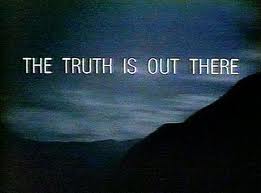Rhodesian – Treasure trove in refuse
It is essential, of course, that the deposits should not have been disturbed, so as to ensure that the specimen is of the same age as the deposits, and that the bones have not been introduced into them at a later date, for instance, by falling into a rift in the ground as some think happened to the remains of Rhodesian man in South Africa, or by burial. When the relation of all the known deposits or strata one to another has been determined, this gives a time scale by stratification. Let us take as a simple illustration the method by which the archaeologist works when excavating the remains of a city which has long been destroyed and of which there are no written records. It is suppose that near a village there is a refuse pit into which the inhabitants of the village have been accustomed to throw all their refuse for a period of hundred of years. The refuse will include not only scraps of food, but broken pots, tools and the like, as well as old bones. If this pit has been undisturbed, when we dig down through its contents we come first of all on the refuse of yesterday, then in succession to that of last week, last month, last year, and so on back through the centuries, until we reach the time when the village was first founded in the virgin soil at the bottom of the pit. Now if the contents are taken out carefully in separate layers and sifted, and the contents of each layer kept separate and arranged in the order in time in which they were thrown away, it is possible to reconstruct a more or less complete picture not only of the history of the settlement, but also of the manners, customs, industries and arts of the inhabitants of the village at different periods. What kind of cattle they had and the nature of their food will be shown by the bones and refuse. How they dressed, and what material they used for tools and implements, when new fashion in material and form were introduced, and when old fashions died out, all these can be traced, and if the layers are numbered in order these changes can be dated accurately in terms of the time scale afforded by the sequence of layers.


